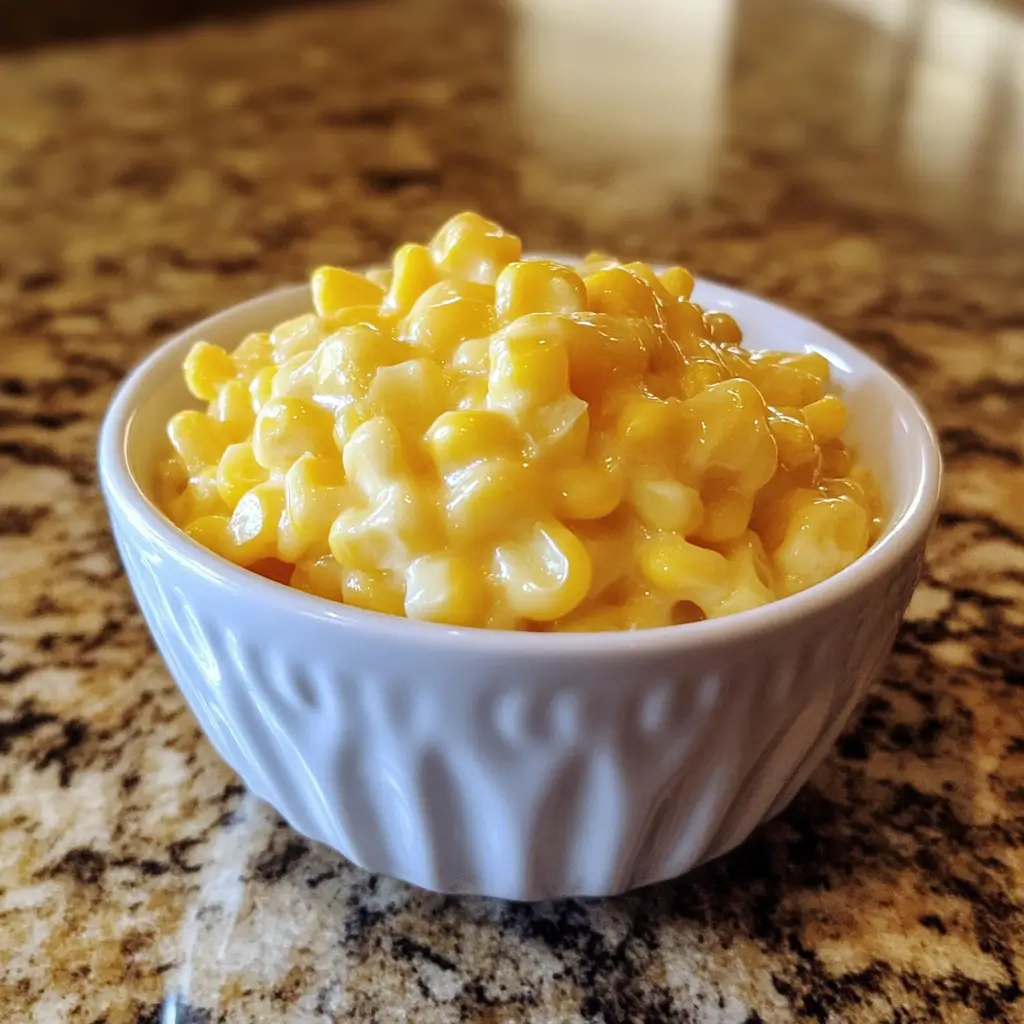So, you’ve made your corn casserole, and it’s time for the big moment—the first bite. You cut into it, and… wait. The middle is totally runny! Ugh. It’s frustrating, right? It looks perfect on the outside but something’s off in the center. You’re not alone, my friend. If you’ve found yourself staring down a dish that’s mushy in the middle, you’re probably asking: Why is my corn casserole runny?
Well, don’t worry! I’ve been there. (More times than I’d like to admit!) After years of experimenting, I’ve cracked the code on what causes this messy middle and how to fix it. So, let’s dig in. We’re going to talk about why it happens, how to fix it, and—most importantly—how to make sure it never happens again.
Grab a snack (preferably not corn casserole, at least until we solve this) and let’s get into it!
What Exactly Is Corn Casserole?
Before we dive into the troubleshooting, let’s take a quick second to remember just how delicious corn casserole is. This beloved side dish is a staple at Thanksgiving dinners, potlucks, and pretty much every big family meal in the U.S. It’s sweet, savory, and creamy all at once. What’s not to love?
Corn casserole is usually made with a mix of corn kernels, cornmeal, cream-style corn, eggs, butter, and sometimes cheese. It has a comforting, pudding-like texture on the inside and a golden, slightly crispy top. When done right, it’s pure comfort food. So, if yours didn’t quite turn out the way you envisioned, we’ll figure it out!
If you’re looking for a classic Cracker Barrel Corn Casserole recipe to try, look no further! I’ve got you covered with a foolproof recipe to guide you to perfection every time.
The Mystery of the Runny Corn Casserole
We can answer Why is my corn casserole runny in the middle?
If you’ve been baking corn casserole and have noticed a runny middle, it’s probably leaving you scratching your head. The outer edges might be set and golden brown, but the center? Well, it looks more like a soupy mess. This is super frustrating, especially when you’ve followed the recipe to a T. So, let’s break down the most common reasons why this happens.
1. Not Enough Baking Time
Honestly, this is the number one culprit in many cases. Corn casserole needs time to set, especially in the middle. It’s easy to get impatient and pull it out too soon, thinking it’s ready when the edges look done. But the center needs a bit longer to firm up. The magic really happens when the casserole gets that extra time in the oven.
Fix It: The next time you make corn casserole, try extending the baking time by 10-15 minutes (sometimes even longer, depending on your oven). Make sure it’s fully cooked in the middle. Pro tip: check the center with a toothpick or fork. If it comes out clean, you’re golden.
2. Too Much Wet Ingredients (or Too Little Dry)
Corn casserole typically calls for a healthy amount of wet ingredients like cream-style corn, milk, and butter to give it that creamy, rich texture we all love. But if there’s too much moisture in the mix or not enough dry ingredients to balance it, the result can be a corn casserole runny middle. This often happens when you accidentally add too much of the wet ingredients, like cream-style corn, or go overboard with butter or milk. These ingredients are essential for moisture and creaminess, but too much liquid can prevent the casserole from firming up properly, leaving the middle soggy and undercooked. It’s all about finding the right balance—if the ratio tips too far toward the wet ingredients, the casserole won’t have enough structure to set in the oven, causing that disappointing runny center. The texture and consistency of your corn casserole are directly impacted by how much liquid you’re using. Too much moisture and not enough dry ingredients, like cornmeal, flour, or even egg, can result in a soupy mess.
Fix It: Next time you’re making corn casserole, it’s a good idea to double-check your ingredient ratios before mixing. A reliable corn casserole recipe will usually provide the right balance of wet and dry ingredients to get that perfectly creamy inside that isn’t overly runny. Try reducing the amount of milk or cream-style corn slightly and, if you can, cut back on the butter just a bit—this will help keep the casserole from getting too liquidy. If you’re using fresh corn kernels instead of canned, make sure to drain them thoroughly to avoid adding any extra moisture to the dish. This might sound like a small detail, but it can make all the difference when it comes to the final texture and consistency of your casserole. By finding the perfect balance, you’ll get that ideal creamy interior without the mess!
3. Incorrect Oven Temperature
Oven temperature is one of the most important factors when baking corn casserole, and it’s often the culprit behind a runny middle. If your oven is running too cool, the casserole will take too long to cook through, leaving the center soggy and undercooked. On the other hand, if the oven is too hot, the casserole may cook too quickly on the outside, causing the edges to burn or get too crispy before the middle has a chance to set. Finding that sweet spot in temperature is crucial to ensuring your casserole bakes evenly, with a golden brown top and a firm, creamy middle. It’s all about that perfect balance—too hot and the outer edges will cook too fast, while the inside remains a soupy mess, and too cool and the whole thing will take forever to bake properly.
Fix It: To avoid this, the first step is to check your oven temperature with an oven thermometer. Many ovens run a little hotter or cooler than the temperature dial reads, which can really throw off your baking time and results. I know, it’s kind of a pain, but using an oven thermometer is an easy and inexpensive way to make sure you’re baking at the right temperature. For corn casserole, you typically want to bake it at around 350°F. If you’re still running into issues with a runny center, try lowering the temperature just a bit—maybe down to 325°F—and bake it a little longer. A slower bake can help the casserole cook evenly without burning the edges. This way, the casserole has time to set properly in the middle, resulting in that creamy texture without the gooey, uncooked center. A slow, steady bake is truly the key to success here, so don’t rush it. And, just as a general rule of thumb, resist the urge to crank up the heat to try to speed things along—it usually doesn’t end well. Patience is your best friend in this case!
4. Too Few Eggs (Or Overbeating the Eggs)
Eggs are the unsung heroes of a good corn casserole. They help bind everything together and give it that custard-like texture. If you don’t use enough eggs or if you overbeat them, the casserole’s structure can suffer, leaving you with a runny center.
Fix It: Check your recipe to make sure it’s calling for the right amount of eggs. Typically, you need at least 2 large eggs to help bind everything. When mixing them in, don’t overdo it—just whisk until the eggs are well incorporated. Over-beating can cause air bubbles and mess with the casserole’s texture.
5. Underbaking Due to a Too-Deep Casserole Dish
Corn casserole recipes can be pretty flexible in terms of dish size, but if your dish is too deep, the casserole won’t cook evenly. A deep dish can result in the edges setting up first while the middle stays runny.
Fix It: Consider using a larger, more shallow casserole dish to increase the surface area. This way, the heat can reach the middle more quickly, allowing the whole casserole to cook through at the same time. Or, if you’re stuck with a deeper dish, extend the cooking time until the middle is fully cooked.
6. Inconsistent Mixing of the Ingredients
If you don’t mix the ingredients well enough, you could end up with pockets of extra liquid in the casserole that won’t cook properly. This is especially true if you’re using corn kernels and other chunky ingredients like cheese or diced peppers. These chunks might sink to the bottom and leave the top too dry.
Fix It: Make sure you mix the ingredients evenly before baking. If you’re adding extra ingredients like cheese, make sure it’s evenly distributed throughout the mixture to avoid uneven cooking. You don’t want all that goodness sinking to the bottom!
How to Prevent the Runny Corn Casserole in the Future
Now that we know what could be causing your runny casserole, let’s talk about how to prevent it from happening next time. These are my go-to tips for perfecting your corn casserole and ensuring you get that glorious, set middle every time.
1. Stick to the Recipe (Mostly)
Yeah, I know, you love experimenting in the kitchen. But for this dish, sticking pretty close to the recipe really helps. The corn casserole formula (cream corn + cornmeal + eggs + butter) has been tested and perfected over time. If you make too many changes, you might end up with a soupy mess. It’s okay to play around, but when it comes to your core ingredients, don’t stray too far.
2. Use a Wider Dish for More Even Cooking
Like we talked about earlier, a shallow casserole dish is your best friend here. It helps distribute the heat more evenly, cooking the middle without burning the edges. If you have a deeper dish, just be patient and make sure you cook it long enough to set the middle.
3. Test the Center Early and Often
Before you pull your casserole out of the oven, test it! I know, you want to eat right away, but trust me—poke it with a toothpick or knife. If it comes out clean, you’re good to go. If it’s still wet, give it some more time. Don’t worry, it won’t dry out if you keep it covered.
4. Consider Adding a Binding Agent
If you’ve got a recipe that’s a little too runny by nature, consider adding a bit more cornmeal or even a spoonful of flour. These dry ingredients will help thicken up the casserole and keep the texture from getting too soggy. A bit of grated cheese or breadcrumbs on top can also help create a firmer crust.
5. Bake Low and Slow
Remember: slow and steady wins the race. If you’re unsure about your casserole, lower the oven temperature a bit and bake it longer. Giving your casserole a little extra time to set won’t hurt, and you’ll avoid the dreaded runny middle!
Final Thoughts
Corn casserole is a dish that can go from “oh my gosh, this is perfect” to “yikes, what happened?” faster than you can say “second helpings.” But don’t worry—getting the perfect casserole isn’t a mystery, and with these tips, you’ll be able to avoid the runny middle once and for all.
The key is patience, the right balance of ingredients, and a little love (and maybe a glass of wine) while it bakes. Trust me, once you master this dish, it’ll be your go-to for every family gathering and holiday feast.
So, next time you make corn casserole, remember: If the middle’s runny, it’s all fixable. Just use these tips, and you’ll have that perfectly set, golden brown masterpiece to serve with pride.
Happy baking—and may your corn casserole always be the star of the table!


1 thought on “Why is My Corn Casserole Runny? 6 Tips to Fix It!”